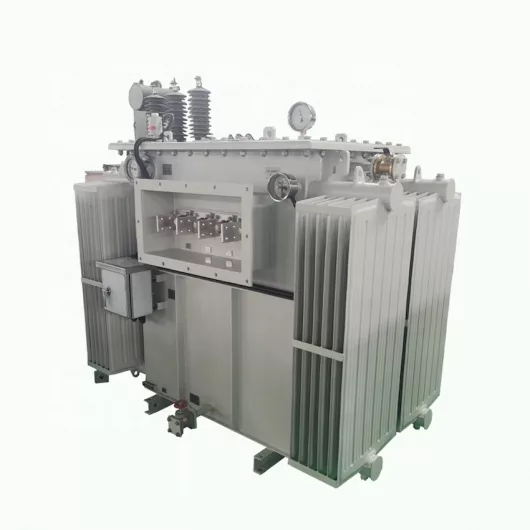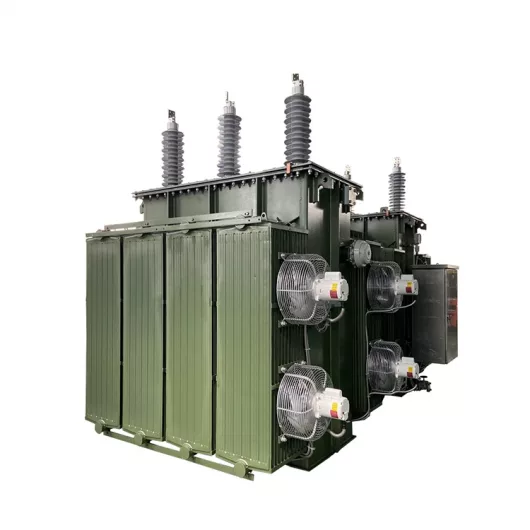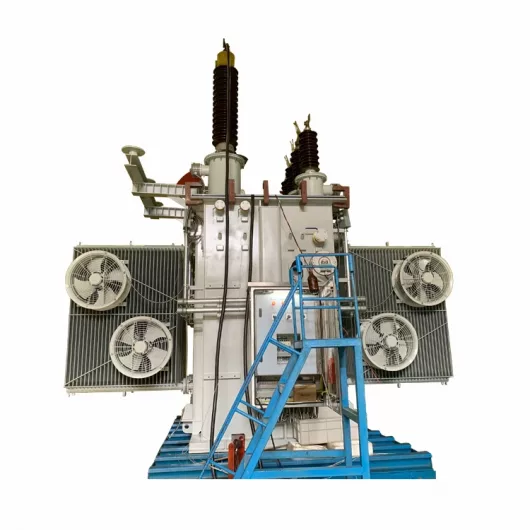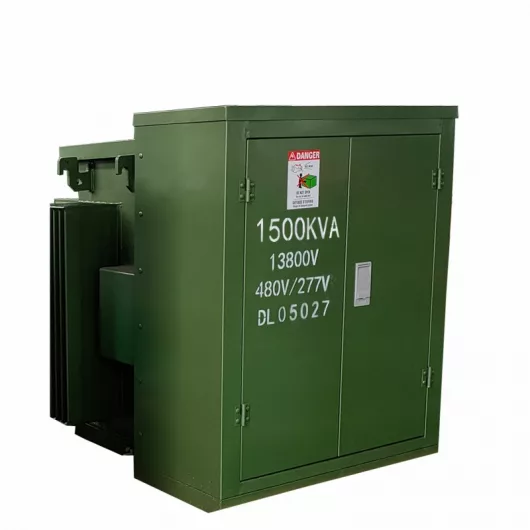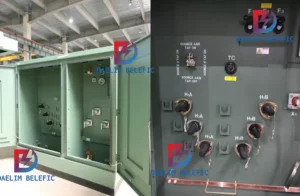
How to Choose Pad Mounted Transformer?
Table of Contents Selecting the right pad-mounted transformer requires careful consideration of several critical factors, as these ground-mounted distribution transformers play a vital role
ELECTRIC, WITH AN EDGE
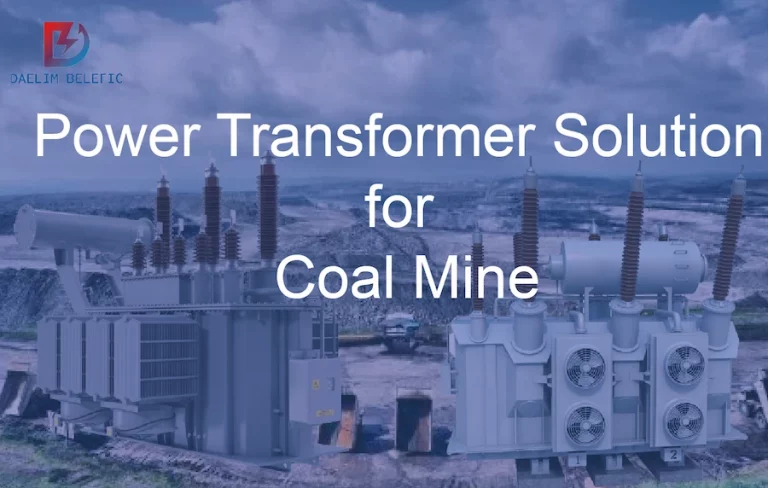
In the design of the coal mine power supply part, after the mine load statistics, the primary problem is to determine the voltage level of the main power transformer, the number of power transformers, and the power transformer capacity. It seems to be a general common sense problem, but it is one that is easy to get confused.
Now the design is the same, no matter how big the mine is and how big the load is, there are two main power transformers in the open-pit or mine, and the capacity is greater than the load, one is used and the other is prepared. Undoubtedly it meets the requirements, but sometimes it is not necessarily economical.
Under normal circumstances, the mine power supply should adopt the split operation mode. When the first loop is running, the other loop must be powered on for standby to ensure the continuity of the power supply.
According to the above regulations, the mine’s double-circuit power supply, double-circuit line, and double power transformers are all live and standby, and they are hot standby for each other, and it is not allowed to use a cold standby for one cycle.
The dual power supply and dual power transformers of the coal mine have to pay the basic electricity cost of the sum of the capacity of the two power transformers. The following is a discussion on the selection and wiring of the main power transformer of the coal mine substation.
Coal Mine A: my scale of 3.0 mt/a, the calculated load of electricity for the whole mine is 9742KVA. The design uses one 35KV substation, the main power transformer SL7-12500KVA/35 /10KV, two for one use, and one for backup.
According to the electricity load of coal mine A, there are three options for the main power transformer selection. The following three options are compared as follows:
The basic electricity fee must be paid every year: 2.98 USD × 2 × 12500 × 12 = 894,000 USD (basic electricity fee is charged according to the installed capacity of the power transformer, 2.98 USD/KVA in this area. Monthly, slightly different in each region).
Principle: There should be no less than 2 main power transformers in a mine substation. When one of the power transformers stops running, the capacity of the remaining power transformers should ensure that the primary and secondary loads use electricity.
The 8000KVA power transformer is selected relative to the total coal load of 9742KVA, and the power supply guarantee coefficient is 0. 82. It can meet the power consumption of the first and second load, and meet the above regulations.
Annual basic electricity fee: 2.98 USD × 2 × 8000 × 12 = 572160 USD
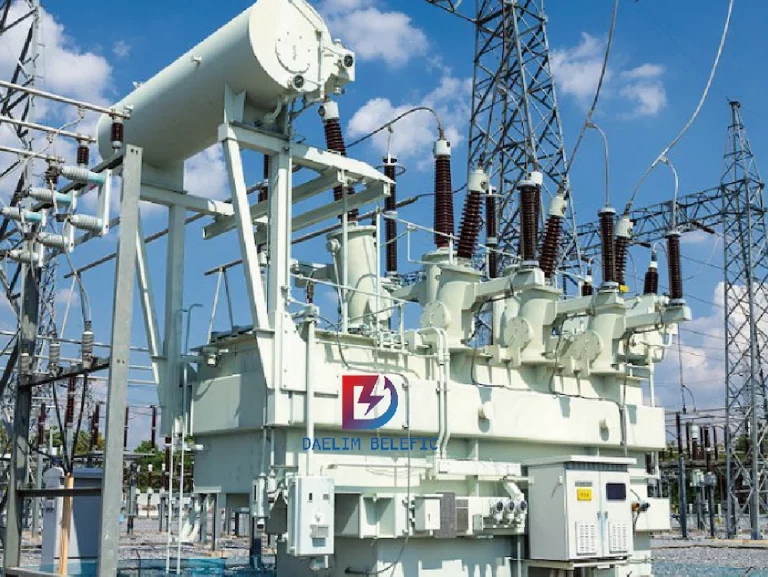
Annual basic electricity fee: 2.98 USD × 3 × 5000 × 12 = 536823.72usd
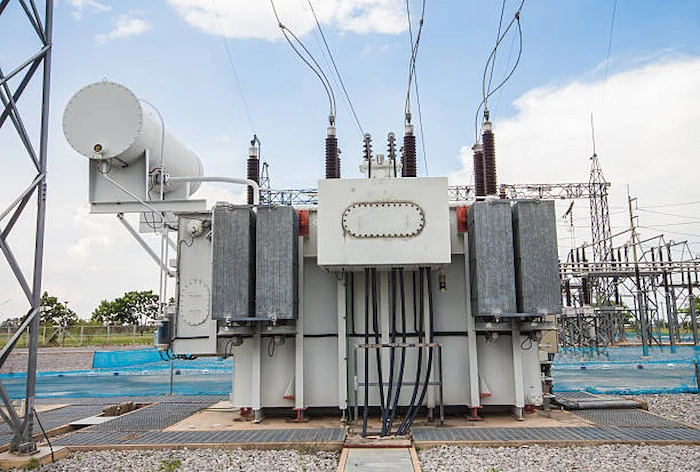
B coal mine 2# open-pit mine: the mine scale is 15Mt/a, the electricity load of the whole mine is 59000KVA, and the design uses 2×63000KVA/110/35/10 power transformers. There are three options for comparison below.
Annual basic electricity fee: 2.98usd × 2 × 63000 × 12 = 4,505,760usd
Annual basic electricity fee: 2.98usd × 2 × 31500 × 12 = 2252880usd
According to the “Code for Design of Coal Industry Open-pit Mines”, the centralized drainage pump station should have two circuits for power supply. When one circuit fails, the other circuit should meet the load when all the drainage pump motors can start normally and have the maximum displacement.
The capacity of 31500KVA can meet a load of all drainage pumps at the electric start and maximum drainage.
The basic electricity bill to be paid every year is 2.98 USD × 3 × 31500 × 12 = 3379320 USD.
In the open-pit mine substation, the main power transformer option two pays the least basic electricity fee, which is 225451.6usd less than option one and 112725.8usd less than option three.
Comprehensive comparison plan two is the most economical and saves a huge amount of money, and it is within the scope of the specification.
Although it has a certain impact on production in the event of an accident, the failure rate of the power transformer is less, and the comprehensive comparison can choose the second plan. It is more reasonable.
Most of the design adopts scheme one, which pays too much attention to 100% backup in case of failure and neglects the economy.
From the above analysis and calculation, for large mines and large open-pit mines, due to the large installed capacity of power transformers, the basic electricity bill is a huge figure and has to be considered. The probability of failure of the power transformer is very small. can satisfy.
According to the above analysis, the second option (that is, two power transformers working at the same time) is the most economical regardless of whether it is a mine or an open-pit mine.
The only flaw is that when one fails, the other cannot guarantee all the loads of the mine. Although it meets the specifications, it affects production and life for the continuity of production.
The solution can be to add an auxiliary power transformer to the two power transformers.
The power transformer capacity is selected from 20% to 40% of the mine load, and a 10KV bus is added when it is normal. When the bus is disconnected in the event of a failure, the self-provided diesel engine generates electricity to meet the electricity consumption of coal mines.
This will not affect production too much, and will not increase the basic electricity bill. Although there is an initial equipment fee, it is much smaller than the basic electricity fee paid. The connection method of the power transformer is shown in the following figure.
In the above figure, B1 and B2 are normal power transformers, B1 and B2 power transformers are coal mine normal load 80 ℅, B3 is auxiliary power transformer, coal mine normal load 20 ℅, when the power transformer is normal, B1 and B2 power transformers operate simultaneously, and B3 is disconnected.
When one fails, the other can ensure the normal operation of the mine’s first and second load or the open-pit drainage pump.
Once the fault is difficult to repair, a B3 power transformer can be used when normal production and work are affected by a power transformer. After the B3 power transformer is put into operation, the coal mine load is guaranteed to be 100 ℅, and the middle bus bar only has a low-level load on the grounding surface.
The above is the author’s suggestion and needs to be studied. The author found that the power transformer accident rate is not high through many surveys of electricity users. Since the power transformer accident rate is not high, it is not necessary to prepare a backup auxiliary power transformer for diesel power generation. Save costs as much as possible on the basis.
Therefore, in the future design, the comparison of schemes should not only compare the basic investment, but also compare the operating costs, comprehensively compare and grasp the specifications, and optimize the design.
Of course, if the local power supply department preferentially uses electricity or reduces or exempts the basic electricity charge for hot standby, the above scheme may not be considered. In short, the design depends on the specific situation.
For example, the coal mine power source is different from the superior power source, and the fees may be different.
If this is the case, the second option above is more economical. In short, depending on the agreement of the power supply department, comprehensive consideration will be made to reduce the production cost on the basis of meeting the regulations.

Table of Contents Selecting the right pad-mounted transformer requires careful consideration of several critical factors, as these ground-mounted distribution transformers play a vital role
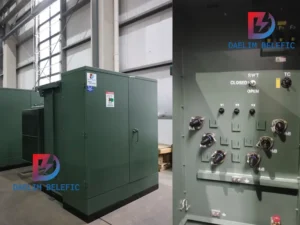
The primary function of the pad mounted transformer is to serve as a critical distribution transformer that steps down higher primary voltage from utility distribution
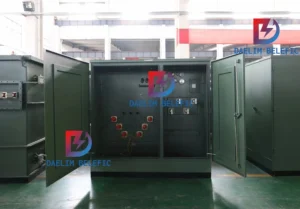
A pad mounted transformer operates through electromagnetic induction, serving as a crucial distribution component that converts high voltage electricity to lower, usable voltages for residential
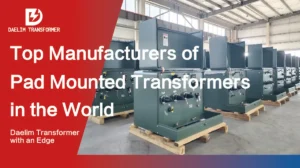
When looking for the best pad-mounted transformer manufacturer, it’s important to find industry leaders known for reliability and innovative solutions. Pad-mounted transformers are essential in
